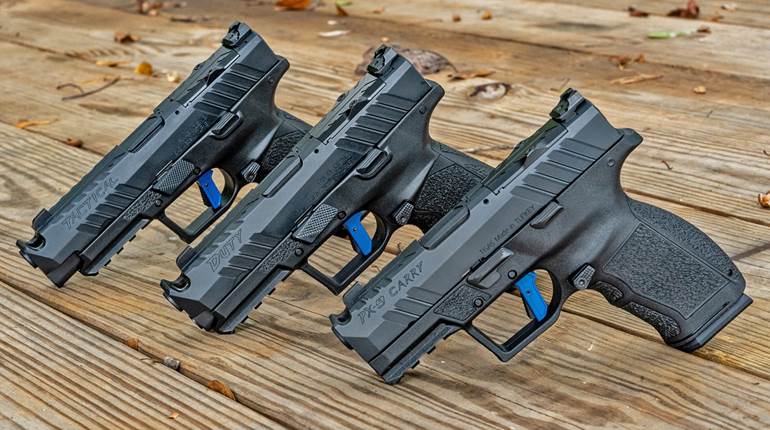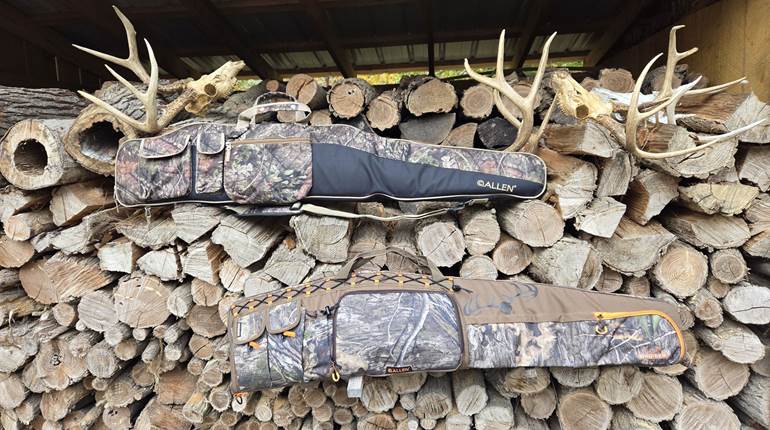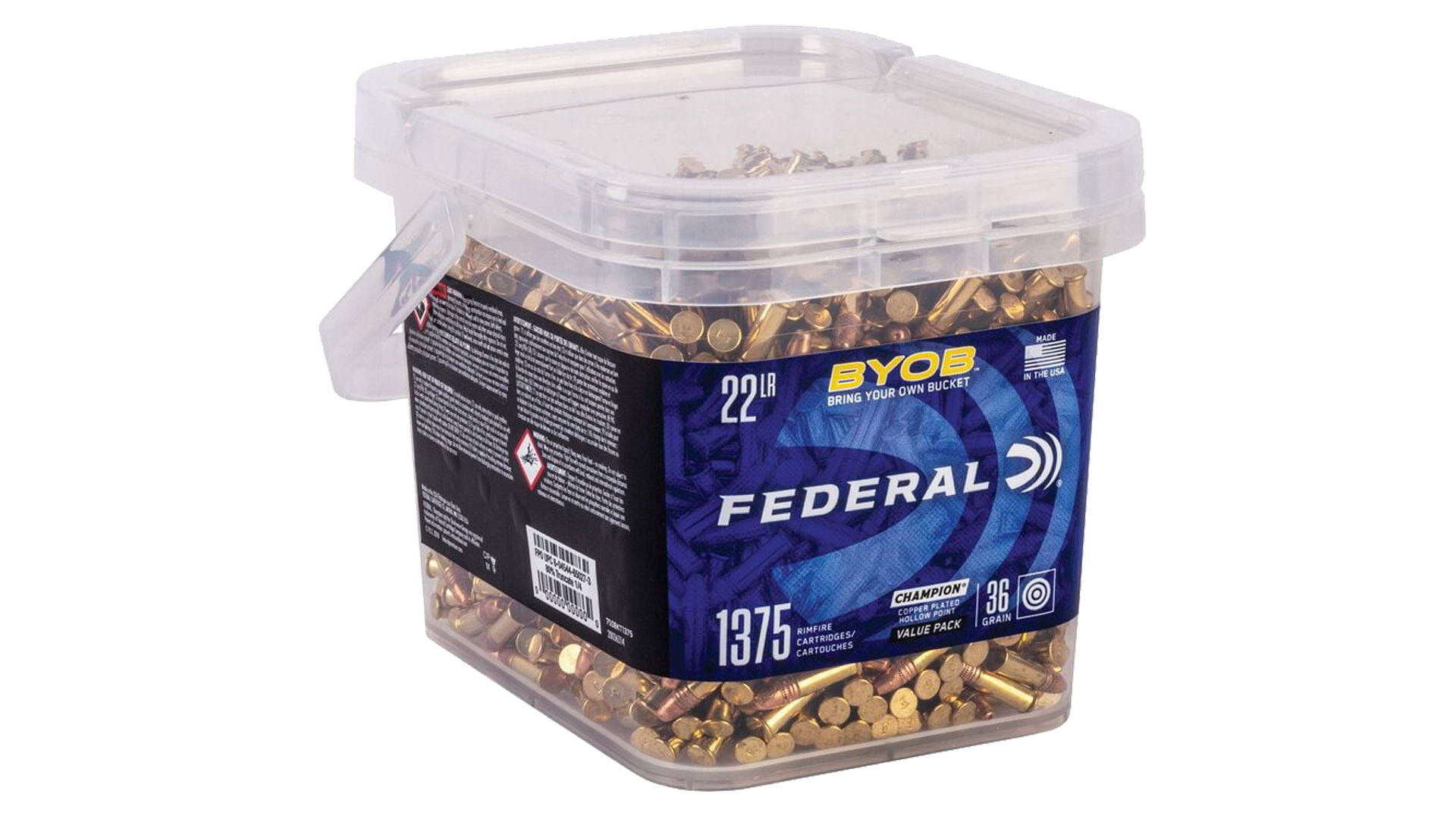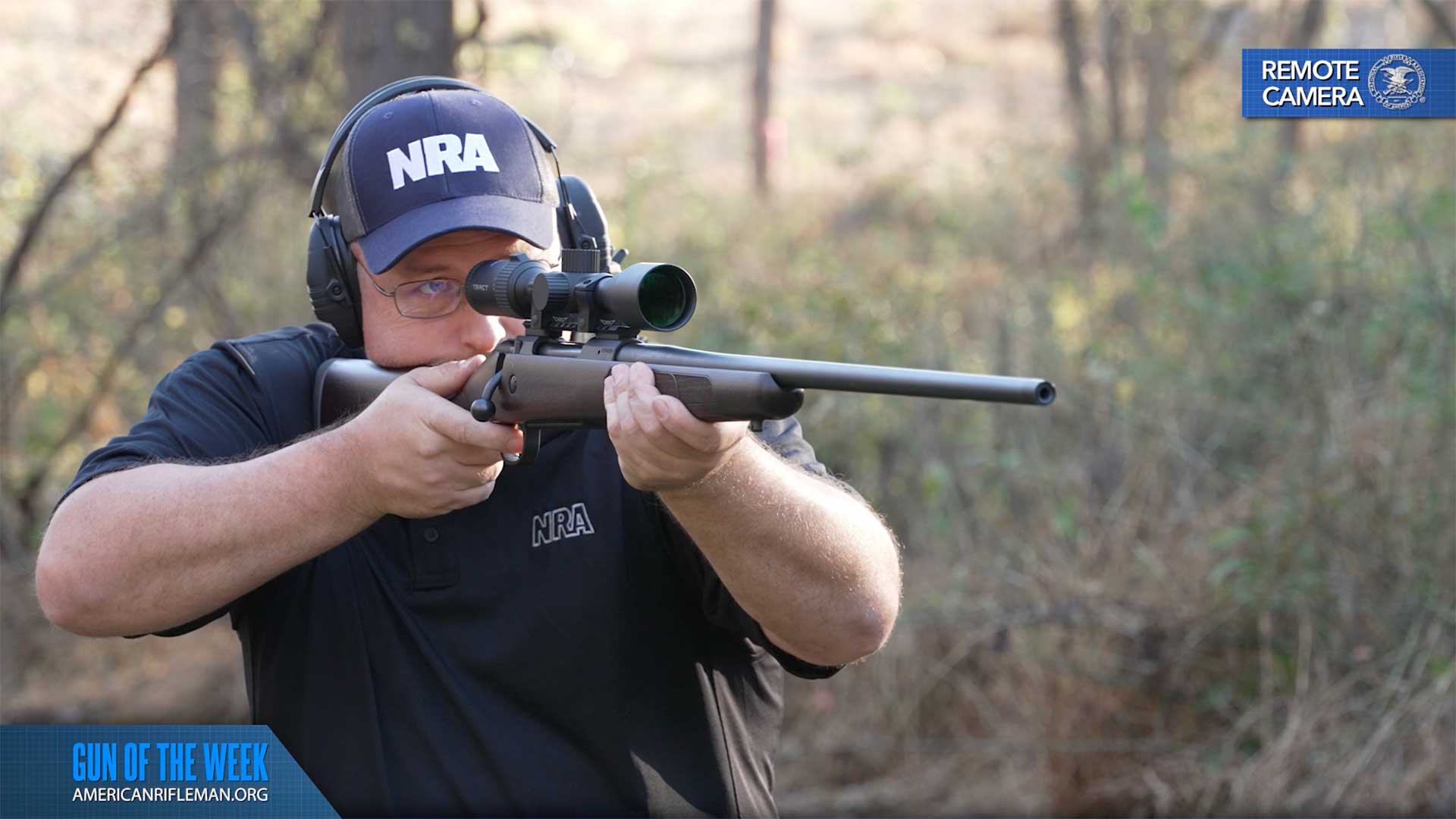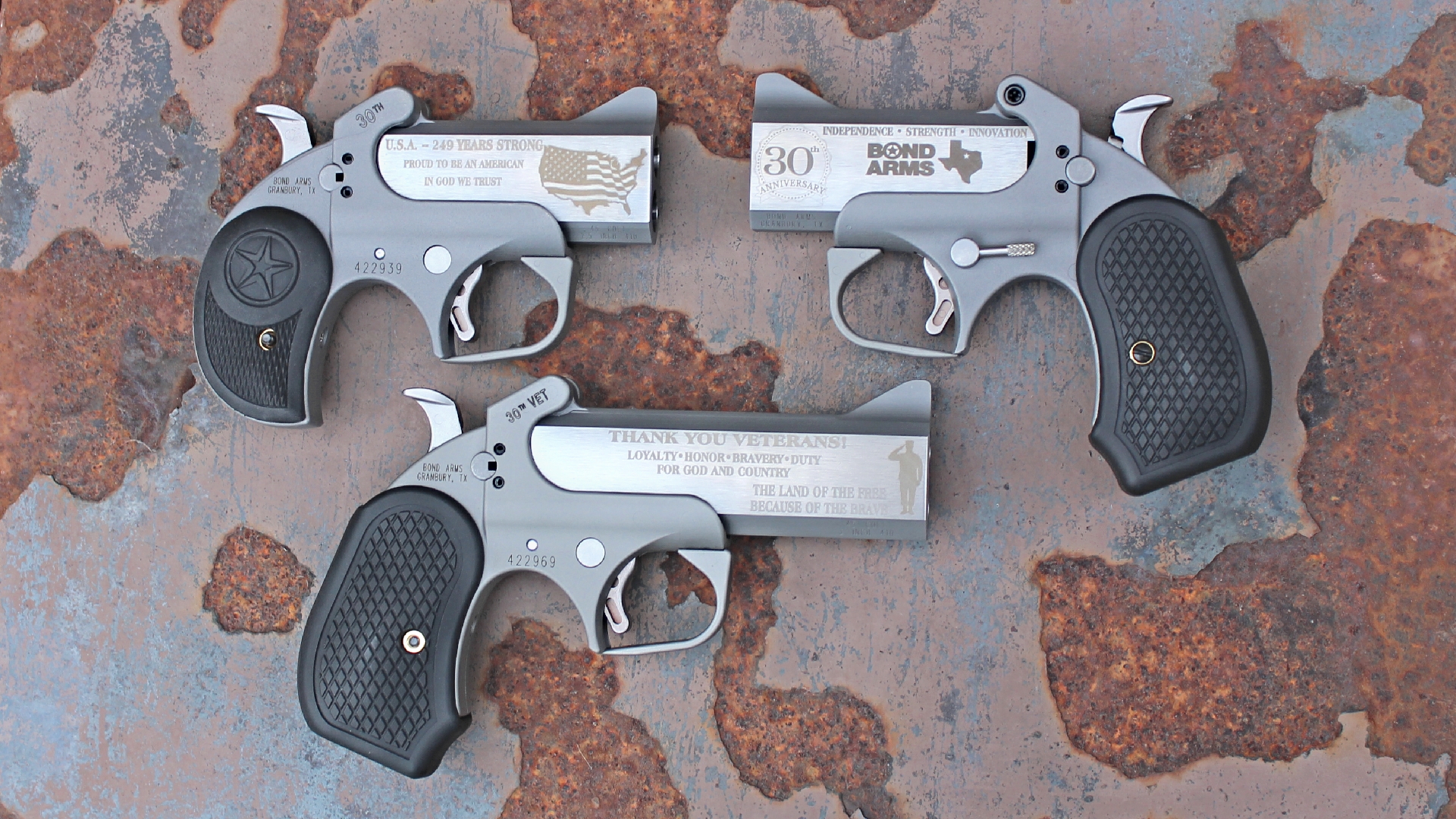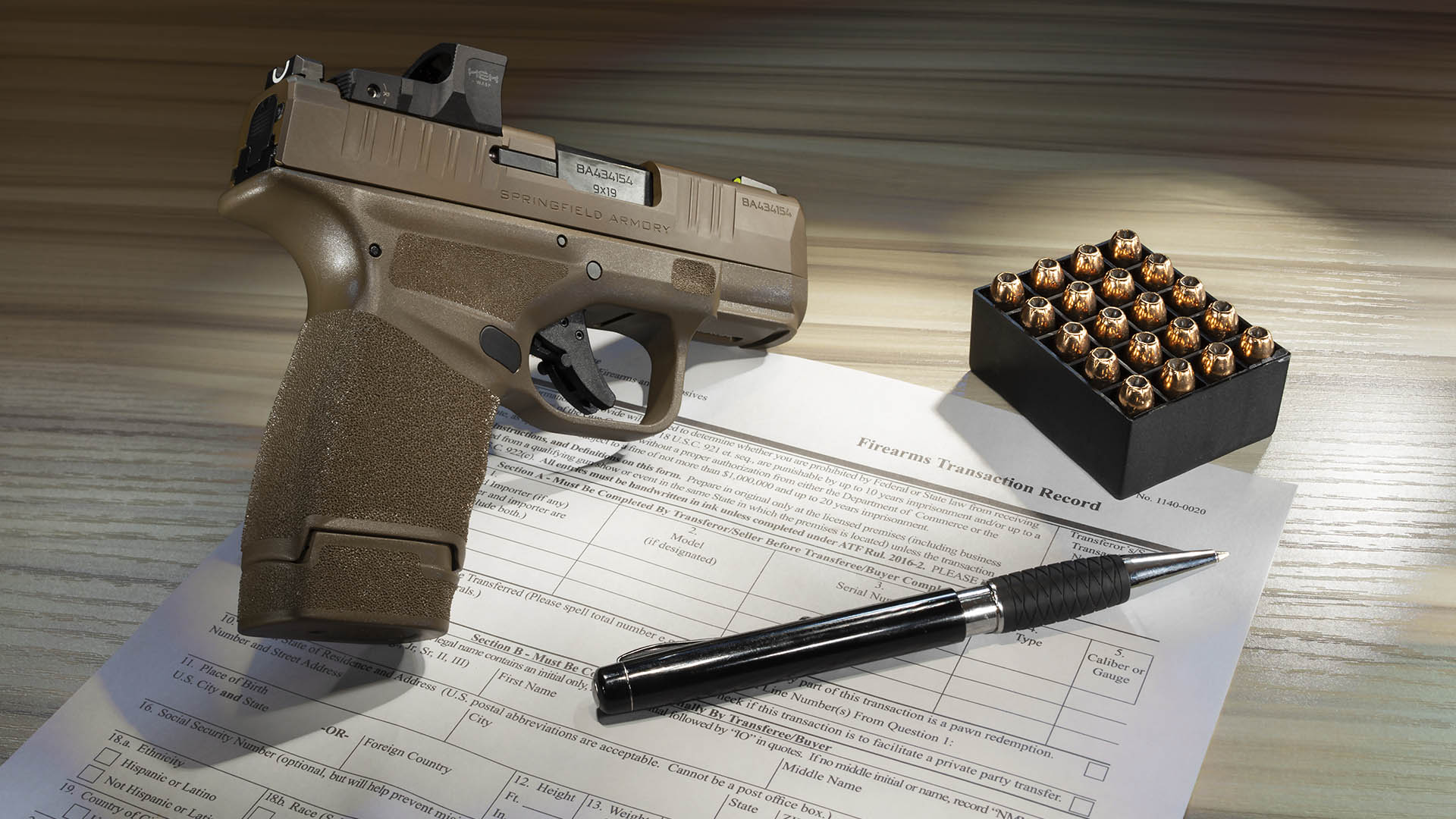
If you were to ask astute gun owners to name five rifle makers, Savage Arms would likely make the list for most—and for good reason. The company’s omnipresent rifles have an unparalleled reputation for delivering world-class accuracy at an affordable price. Frankly, the performance-to-price ratio is unmatched, which is the reason Savage rifles remain at the top of the list of the everyman, even after a century of operation.
Conversely, if the same firearm enthusiasts were solicited to identify five handgun manufacturers, Savage Arms almost assuredly wouldn’t make the cut. That’s not totally unexpected, given the company’s erratic history with making them. But that could very well change due to the recent debut of the Stance, reviewed here. But before delving into the specifics of Savage’s new pistol, it’s worth reflecting on the company’s history with handguns.
Savage & Handguns
When Savage Repeating Arms Co. was formed in Utica, N.Y., in 1894—it was re-organized into the Savage Arms Co. shortly thereafter—the first firearm it offered to consumers was the Model 1895, a hammerless, lever-action rifle chambered in .303 Savage and featuring a six-round rotary magazine. Improvements to the design led to the creation of the Model 1899, of which more than 1 million units were manufactured. Based upon this information, you’d surmise that all of Savage’s initial pursuits involved long guns—and you’d be wrong.
Soon after its founding, Savage Arms dabbled in the self-defense-handgun market. Its first endeavor was the successful Model 1907 Auto Pistol (see p. 80), which was a scaled-down version of the .45-cal. design submitted for the U.S. Army trials. The Blue Book of Gun Values, 35th Ed., records that the delayed-blowback pistol was offered in .32 ACP and .380 ACP, with a 10- or nine-round-capacity detachable box magazine, respectively. Whereas the Model 1907 in .32 ACP wore a 313⁄16" barrel, the .380 ACP version was fitted with a 45⁄16" tube. Other features included: fixed sights (a blade front paired with a notch rear); an exposed cocking piece; single-action trigger; manual safety; and metal or hard rubber stocks. Of course, upgrades, such as pearl stocks or a nickel, silver or gold finish, were available. The Model 1907 was manufactured from 1908 to 1920, with approximately 259,000 made in total.
From the Model 1907 emerged the Model 1915 Hammerless, which, true to its name, had no visible cocking piece, but it did incorporate a grip safety. Also available in .32 ACP and .380 ACP, it was produced from 1915 to 1917. Later, from 1920 to 1928, the Model 1907 design would be resurrected once again in the Model 1917 Automatic. It featured a spur cocking piece and trapezoidal stocks, and was offered in the same chamberings as its predecessors.
Despite encountering success (at least initially) with its semi-automatic pistols, the company re-directed its focus solely to long guns for nearly four decades. Its return to handguns took the shape of the unique—and short-lived—Model 101, which was a single-action, single-shot chambered in .22 Long Rifle that was styled like a six-shot, centerfire revolver. Manufactured from 1960 to 1968, the blued handgun had an adjustable rear sight (with blade front), a swing-out barrel and cylinder, a rebounding hammer and laminated wood stocks infused with plastic.
Savage’s next foray into handguns—the bolt-action Striker series—applied the company’s expertise in rifle making to create models suitable for plinking, hunting and competition. Basically, composite handgun stocks were paired with Savage’s time-tested rimfire and centerfire actions, which were fitted with abbreviated barrels (10" for rimfires, 14" for centerfires). Features differed by model, but all had left-hand bolts with right-hand ejection. Chamberings included: .17 HMR, .22 Long Rifle, .22 WMR., .223 Rem., .22-250 Rem., .243 Win., .260 Rem., 7 mm-08 Rem. and .308 Win. For aficionados of magnum cartridges, versions chambered in .270 WSM, 7 mm WSM and .300 WSM were also offered. Introduced in 1998, the first options were the centerfire Model 510F, Model 516FSS and Model 516FSAK; rimfires followed shortly thereafter. Production of all Striker models ceased by 2005.
Since the mid-2000s, Savage has more or less focused on its bread-and-butter business—rifles, with a smattering of shotguns. That was until the recent launch of a new bolt-action handgun, the Model 110 PCS, as well as its first foray into semi-automatic pistols since the Roaring ’20s: the Stance.
Why was the new pistol named as such? Beth Shimanski, Savage’s director of marketing, shared that, “When firing a pistol, especially an everyday carry (EDC) model, body position and confidence is everything. We felt that the word ‘Stance’ fit well with what this model was designed for.” When asked why the company decided to get back into the pistol market, Shimanski said, “Savage has been talking publicly for more than a year about how the company will grow organically and/or by acquisition. This is true in all categories, and handguns make up 50 percent of the firearm market—of which Savage had zero share,” she said. “It was simple economics.”
To fulfill Savage’s yearning for an EDC handgun, it followed the common industry practice of acquiring an early version of a design in which it was interested—in this case, the former Honor Guard pistol from Honor Defense. According to Shimanski, “From there, Savage engineers fine-tuned the platform, manufacturing process and overall development and delivered the present-day Stance models.”

Stance: A Change In View
Savage Arms is returning to its roots with the Stance. Unlike some of the previously mentioned models, which were well suited for plinking, competition and/or hunting, the Stance harkens back to the reason for the Model 1907 Auto Pistol and its brethren—personal protection. The Stance is a contemporary, micro-compact, striker-fired, 9 mm Luger-chambered handgun with a modular chassis that is designed solely for defensive use. Let’s now examine the gun.
Immediately noticeable is the Stance’s stylish, yet functional, frame. Available in black, flat dark earth (FDE) or gray (tested), the thin, glass-filled nylon frame—mated with a stainless-steel chassis—features finger grooves and aggressive, 360-degree stippling to enhance purchase. Think of the texture as equivalent to skateboard tape. Two, 18-degree interchangeable backstraps ensure that the grip fits a variety of hand sizes. With the seven-round magazine in place, the little finger will rest beneath the base, while the extended, eight-round magazine permits a three-finger hold.
With the exception of the takedown lever, all of the Stance’s fire controls are bilateral in design. On the test pistol, this included two-position manual safeties, slide stops and magazine-release buttons. The manual safety is not found on all models. It’s worth noting here that, although the slide stop has serrated edges to aid grip, the control projects outwardly from the frame only minutely, making manipulation challenging. This would be compounded for an individual with reduced hand strength. Such was not the case with the safety; it moved easily enough and provided audible and tactile indicators of its position. The magazine-release button is sufficiently sized and quickly frees the magazine for reloading.

The wide, smooth-faced trigger on the Stance broke at an average of 6 lbs., 10 ozs. Although that figure seems high, the evenness and creep-free pull made it feel lighter than it was. Overtravel isn’t possible since a small projection is molded into the frame that stops the trigger after firing. Smart. As for the trigger reset, it is lengthy.
Like the frame, the black-nitride-treated, stainless-steel slide of the Stance is eye-catching. This is due to the lightening cuts—five per side—on the front of the slide, which are touted as improving purchase. Certainly, it’ll aid purchase, but the improved look is undeniable. Serrations on the rear of the slide are there to aid grip, too. Engineers paid special attention to the beveling of the slide; hardly apparent from the side, it’s very much so from the front. Savage designed the slide to both hasten and ease holstering.
The sights topping the Stance depend on the model selected. Base models have an orange-dot front and a white-dot, U-notch rear, while other variants (including the test gun) come with snag-free TruGlo tritium sights. For the latter, the front has a green circle, while the dovetailed, U-notch rear has a white circle on each side. Together, they make target acquisition fast and accurate in all lighting conditions. Also, several versions come equipped with a Viridian E-Series Red Laser.

Other characteristics include an oversize ejection port cutout, a hulking extractor and a fixed ejector. Ejection is brisk, with empties sent well right of the shooter but close together. There is also a small cutout in the slide that, along with one in the barrel, enables the user to see if the gun is loaded without doing a press check.
As for the Stance’s 3.2" barrel, Savage wisely crafts it from stainless steel. The natural stainless color not only nicely complements the black-nitride finish of the slide, but the material is also less prone to rusting (remember, this is a carry gun). It has an integral feed ramp as well.
Rounding out the package are the single-stack seven- and eight-round magazines made from steel with a plastic follower and base. As mentioned elsewhere, the latter has an extension that helps improve grip on the smallish pistol. Witness holes show how many rounds are remaining.
Disassembly/Reassembly
Few people want a pistol that’s onerous to disassemble for routine maintenance. Fortunately, fieldstripping the Stance is about as easy as it gets. With the magazine removed, check to ensure it’s unloaded. Next, pull the slide rearward. Pushing upward on the slide stop will lock it in place. With the safety off (on equipped models), rotate the takedown lever 90 degrees clockwise. This not only frees the slide for removal but also deactivates the sear. With the slide in hand, the user can then remove the guide rod and barrel. And that’s it.
Once the maintenance is complete, reassembly is accomplished by reversing the above steps. One note, however—when the heavily tensioned guide rod is re-installed, it must be done so that the springs are not visible from the top at the rear of the recoil-spring assembly. The owner’s manual illustrates this very well. Other than that, nothing special is needed.

Testing
For testing, I was supplied with a gray Stance equipped with the manual safety and TruGlo tritium night sights. Once I had cleaned and lubricated the pistol, I headed to the range with four types of ammunition. Three of them—Hornady Critical Defense 115-grain FTX, Federal Premium Law Enforcement Tactical HST 124-grain JHP and Winchester USA Ready Defense +P 124-grain JHP—were used for accuracy testing, while Blaser Brass Case 115-grain FMJ ammunition was included for volume function testing. According to the owner’s manual, the Stance is rated for +P loads; however, it is not suitable for +P+ loads, so pay attention to the ammunition you’re using. Given the Stance’s abbreviated barrel, the American Rifleman protocol called for accuracy testing to occur at 7 yards, which is a practical distance for a gun of this type.
Upon firing, two things became almost immediately evident. First, the test gun—like seemingly all Savage firearms—was exceptionally accurate and consistent. Secondly, the gun shot to the point of aim at this distance, so no adjustments were necessary; in fact, if I did my part, the gun would create small groups inside, or just to the side of, the bullseye.

All three of the defensive loads proved to be accurate and sure functioning, and all would be good choices for carry. Still, there must be a winner, right? Wrong. I cannot recall this happening before, but due to one enlarged group (obviously my fault), two of the loads had an identical average. Had I not fired a single 1.30" group, Federal’s Law Enforcement Tactical HST would have earned the top spot. Still, the average was 0.93" for five consecutive, five-shot groups. With this load, my smallest three-shot group measured 0.326", while the tiniest four-shot group was 0.485". Of course, the additional round(s) needed to create the five-shot groups enlarged them.
Like the Federal load, Hornady’s Critical Defense 115-grain FTX—a very comfortable load to use in the petite handgun—averaged 0.93". However, there was no outlier that increased the average; all groups measured between 0.71" and 1.00". The smallest four-shot group—increased with the final shot—measured a scant 0.43". Yeah, the Stance is accurate.
Interestingly, while the Winchester USA Ready Defense +P load posted the largest 25-shot average, which was still a very respectable 1.16", it also generated the smallest single five-shot group. The first group measured a scant 0.64", however, I couldn’t replicate it. The rest of them were more than an inch, with the largest being 1.40".
Such fine accuracy belies the pistol’s somewhat-heavy trigger pull. But, honestly, I didn’t notice it. The TruGlo sights, on the other hand, facilitated consistent sight alignment, and any errant shots were my fault, not the gun’s.
After spending ample time with the Stance, I cannot recommend enough getting the upgraded model with the TruGlo night sights. The difference they make in low-light conditions—when you’ll likely need the gun—cannot be overstated. They make targeting exceptionally easy, regardless of the light. For the minimal price difference, it’s well worth it.
Weighing 22 ozs. and measuring just shy of an inch wide (0.96"), you’d think that muzzle flip and recoil would be uncomfortable during an extended shooting session, but that wasn’t so. Even while resting the Stance atop the sandbag rest, the gun didn’t jump around much. Though the firearm’s weight certainly helped, the secure purchase afforded by its dimensions and clever features integrated into the frame should be given credit, too.
General function testing (plinking) and drills revealed that the Stance’s sights were nearly always aligned, making engaging targets exceptionally fast. Accurately delivering shots on multiple targets in short order posed no problem at all. During all phases of testing, and straight from the case, there were no failures to feed, fire, extract or eject with four different loads—exactly what you want in a defensive handgun.
With all the Stance has going for it, could things be improved? Sure. Mainly, the slide stop is difficult to manipulate. It could be a smidge wider and/or have better texturing for enhanced purchase. So, too, could the trigger. But, overall, there’s little to complain about. I’m just nitpicking; the Stance is an exceptional pistol for the price.
According to Savage, the Stance is just its first step back into the handgun market. “Our first entry demonstrates our commitment to a breadth of styles, and Savage will have even more options in the near future,” Shimanski said. “Our development team has quite a few handguns in the pipeline designed for many different handgun customers. This was the first product to be ready for production.”
Savage is best known for creating exceptional rifles and, more recently, shotguns. But that might be changing. By returning to its roots, the company has not only diversified its offerings, but it has illustrated that, no matter the type of firearm it creates, performance and value are not mutually exclusive. And, when it’s time to name handgun companies, guess who’ll be there? That’s right, Savage Arms.












